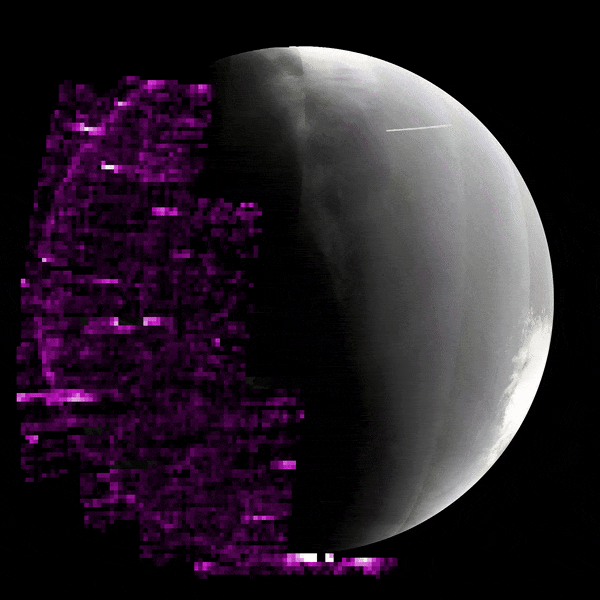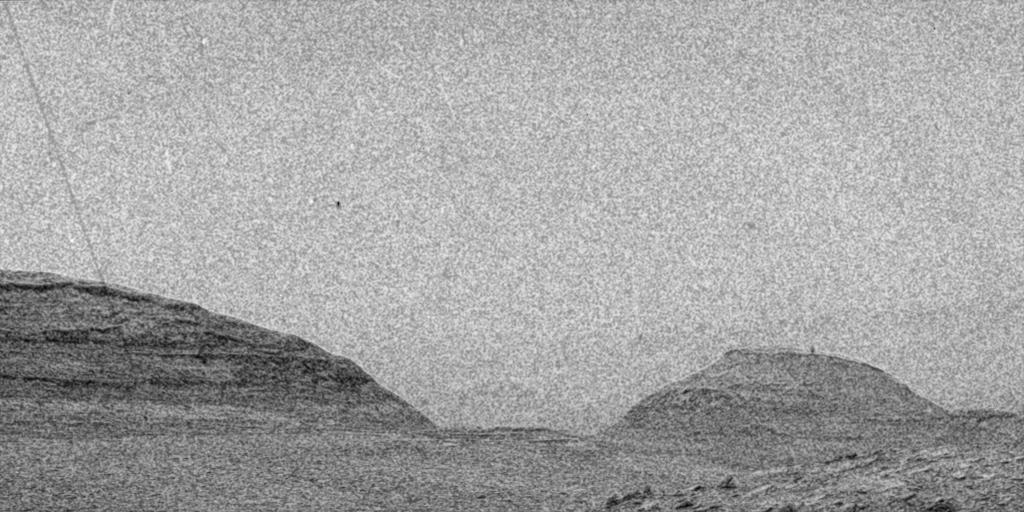Mars Was Hit With a Solar Storm Days After Earth’s Aurora Light Show, NASA Says
Studying this event could hold lessons for scientists about how to protect astronauts from radiation on future trips to the Red Planet

Days after solar storms spurred widespread sightings of auroras across Earth in early May, a new bout of eruptions on the sun brought glowing skies to another planet: Mars.
From pole to pole, Mars was hit by a barrage of gamma rays and X-rays, followed by charged particles from a coronal mass ejection. These led to auroras that would have appeared, if any viewers were on its surface, as a deep green color, reports the New York Times’ Robin George Andrews.
But while humans were able to watch the Earthen spectacle safely—our planet’s magnetic field and atmosphere shielded us from the solar radiation and sent the charged particles toward the poles—such events would be more dangerous on the Red Planet, which lost its magnetic field long ago and has a much thinner atmosphere.
The storm hit Mars on May 20, offering researchers an opportunity to consider how solar radiation would impact potential future astronauts there.
Typically, the Curiosity rover records an average of about 700 micrograys of radiation daily, writes Space.com’s Keith Cooper. But during the storm in late May, this jumped to 8,100 micrograys—the largest the instrument has detected in 12 years—and the equivalent of receiving 30 chest X-rays, all at once.
While not necessarily a fatal dosage, such a strong measurement prompts significant safety considerations for human missions to Mars in the future. The radiation was so powerful that the Mars Odyssey spacecraft was temporarily knocked offline. The instrument’s solar panels experienced about a year’s worth of degradation in a single day, and visuals captured by Odyssey and Curiosity were garbled with static. Though the data they collected were not impacted, it was a reminder that even technology isn’t immune to powerful energy bursts.
On Mars, this was “the strongest solar energetic particle event we’ve seen to date,” Shannon Curry, the principal investigator of NASA’s Mars Atmosphere and Volatile Evolution (MAVEN) orbiter, at the University of Colorado, Boulder, tells the New York Times. “These solar storms pack a punch.”

As NASA researchers consider a future with astronauts on Mars, they say humans could take a few protective steps to ensure their safety. Potential havens from space weather include cliff faces or lava tubes—hollowed-out volcanic chambers wherein astronauts could wait out a solar storm.
A solar storm of this magnitude was actually on Curry’s scientific wish list: “For humans and assets on the Martian surface, we don’t have a solid handle on what the effect is from radiation during solar activity,” she said in a NASA statement in April. “I’d actually love to see the ‘big one’ at Mars this year—a large event that we can study to understand solar radiation better before astronauts go to Mars.”
/https://tf-cmsv2-smithsonianmag-media.s3.amazonaws.com/filer_public/d8/1b/d81bcd7f-fdbc-496e-ad47-6bafef6c7806/mars1.webp)
Currently, the sun is in a period of high activity surrounding its solar maximum, during which surface explosions and radioactive flares occur more frequently than usual.
“There have been several solar events in past weeks, so we were seeing wave after wave of particles hitting Mars,” Christina Lee, MAVEN space weather lead, says in a statement from NASA.
/https://tf-cmsv2-smithsonianmag-media.s3.amazonaws.com/accounts/headshot/ChristianThorsberg_Headshot.png)


/https://tf-cmsv2-smithsonianmag-media.s3.amazonaws.com/accounts/headshot/ChristianThorsberg_Headshot.png)